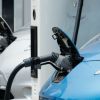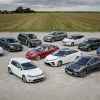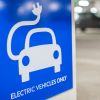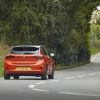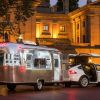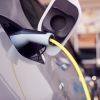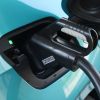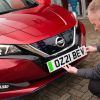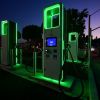The league table ranks the UK’s most popular EV charging networks based on data from its annual survey of Zap-Map’s community of EV drivers.
The results, based on a sample of more than 1,500 Zap-Map users, show that Tesla retains its top spot as the country’s most appreciated EV charging provider. One driver commented that Tesla’s service is “the standard all networks should aspire to”.
In second place overall, and the top place for multi-brand1 networks, is InstaVolt, which retains its second spot for the third year running. One InstaVolt fan commented that the network is “modern, super reliable, generally come in pairs and contactless payment is a huge plus”.
In third place, and greatly improving on its 2019 ranking, is Osprey (formerly Engenie) which scored highly for its reliability and ease of use. One Osprey user also complimented the network’s services as “nice and visible, good locations, simple to use”.
This year’s survey rated 16 charging providers which are ranked from a maximum of 5.0 stars down to the lowest ranking of 2.0 stars. For those networks which EV drivers use regularly, respondents were asked to rate their overall satisfaction (using a 5-point Likert scale), and also their level of satisfaction in the four key areas of: reliability, ease of use, cost and facilities.
Compared with the previous ranking survey, this year’s movers and shakers are Osprey (formerly Engenie), which leap-frogged five places to take 3rd place; bp pulse (formerly BP Chargemaster/ Polar) which dropped 5th to 13th place; and Swarco E.connect which entered the list for the first time in a strong 5th position.
In contrast, at the bottom of the table, Ecotricity’s Electric Highway network was ranked with the lowest score, one user commenting that “they are out of date and unreliable, with a monopoly on motorway site locations”, a sentiment which resonates with many other Zap-Map users that rely on rapid charging at motorway services for longer journeys across the UK.
| EV Network | Rank | Overall Rating^ | Rank 2019 |
|---|---|---|---|
| Tesla** | 1 | 4.8 | 1 |
| InstaVolt | 2 | 4.4 | 2 |
| Osprey (formerly Engenie) | 3 | 4.1 | 8 |
| Pod Point | 4 | 3.7 | 3 |
| Swarco E.connect | 5 | 3.6 | N/A |
| Shell Recharge | 6 | 3.5 | 5 |
| ESB EV Solutions | 7 | 3.4 | N/A |
| NewMotion | 8 | 3.3 | 4 |
| ChargePlace Scotland | 9 | 3.2 | 7 |
| Engie | =10 | 3.1 | N/A |
| IONITY | =10 | 3.1 | N/A |
| GeniePoint | 12 | 3.0 | 10 |
| bp pulse (formerly BP Chargemaster/ Polar) | 13 | 2.9 | 5 |
| Source London | 14 | 2.7 | N/A |
| Charge Your Car (CYC) | 15 | 2.6 | N/A |
| Electric Highway (Ecotricity) | 16 | 2.0 | N/A |
** Average of Tesla Supercharger (5.0) and Destination (4.4) networks.

RAC sale – up to 33% off*
• Roadside cover from £5.29 a month†
• We get to most breakdowns in 60 mins or less
• Our patrols fix 4/5 breakdowns on the spot

As part of the survey, EV drivers were also asked to rank the factors which were most important when choosing a charge point.
Reliability remained the key factor (weighting 5.0), followed by ease of use (2.6), cost (2.3) and finally the local amenities at the charging location (1.0).
These weightings demonstrate the continuing importance of reliability and ease of use for EV drivers when accessing charging services.
The next sections highlight the importance of these factors for each of the highest-ranking EV charging networks, and also explain why those with poor services receive the lowest user ratings.
The best UK EV charging networks
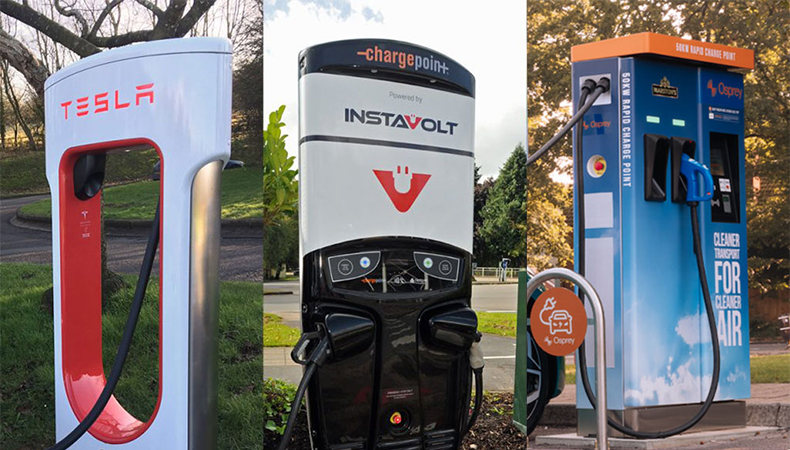
Image: Zap-Map
Rank #1 – Tesla (Supercharger & Destination)
Tesla’s network of over 560 high power superchargers and 1,100 destination chargers continues to provide an excellent charging experience for Tesla drivers.
As it is only open to Tesla vehicles, the charging process is controlled and seamless with no need for any cards, automatic payment on account and free charging for many early adopters (others pay a very competitive 24 p/kWh).
As well as being in the overall top spot, Tesla was in first place for all other categories with the exception of price.
Here it came second to ChargePlace Scotland where many chargers are free to use. In 2020, Tesla added CCS charging capability for the popular Model 3, and upgraded many supercharger locations to 250 kW.
Network stats:
- 562 superchargers (120/250kW) across the UK
- 1,186 destination chargers (11/22 kW) located at hotels, retail sites, etc.
Rank #2 – InstaVolt
InstaVolt, maintains its second place for three years running, and first place for a multi-brand network, by providing a network of reliable rapid chargers and simple contactless payment.
With over 460 rapid chargers across the country, InstaVolt has the third largest rapid network after Tesla and bp pulse. Ranked in 2nd place for both reliability and ease of use, feedback from respondents highlight the reliability of the InstaVolt chargers and the fact that there are generally two chargers at each location providing a level of redundancy. They also delight in the simple and consistent PAYG access provided through contactless payment.
Note, however, that as the units have no AC connectors, Renault Zoe drivers are unable to use them. Also InstaVolt locations are sometimes located at back of service stations or places with no facilities.
The network is ranked in 8th place for cost, with the charge an above average 35 p/kWh, and in 7th place for facilities. This year, InstaVolt has recently announced deals with KFC, Starbucks and McDonalds so expect an increased score for facilities in 2021.
Network stats:
- Rapid network of 461 chargers, 3rd largest rapid network after bp pulse and Tesla
- InstaVolt charge points are located at retail parks, gyms and service stations and are beginning to rollout across Starbucks and KFC outlets.
Rank #3 – Osprey (formerly Engenie)
Recently rebranded, Osprey has been one of the highest movers going from 8th in 2019 to 3rd position this year with a combination of reliable chargers, good visible locations, and easy payments using contactless and app access.
With a growing network of more than 170 rapid and fast charge points, Osprey provides charging for all vehicle models and is also ranked in 3rd position for reliability and ease of use; as well as rapid provision, the addition of AC connectors makes it usable by Renault Zoe drivers thus providing charging for all EV models.
Osprey provides contactless payment on all charge points, have recently released a membership app for regular users and all charge points are available on Zap-Pay the cross-network payment system. The charging price, at 36 p/kWh, is considered high by many although surprisingly this is not reflected in the ranking for price, as they have come in 4th position.
Many of the chargers are located at pubs or restaurants via the relationship with Marston’s, which has resulted in a 2nd place ranking for amenities.
Network stats:
- Rapid and fast charging network with 174 chargers, 7th largest rapid network in UK.
- National network located at high-quality sites including at Marston’s pub/restaurant chain.
The worst UK EV charging networks
At the other end of the table, the key issues for the low ranking of the bottom three networks in the survey are the lack of reliability and ease of use. Pricing and the lack of amenities also play they part. The lowest ranking network are now described in more detail.
Rank #14 – Source London
Many users complain about the pricing on the Source London, which is highly unusual as it is charged on a per minute basis rather than the more standard per kWh. However, the price for charging generally also includes the price of parking which is also high in London and allows pre booking for members.
In addition, the overall access experience, via app, RFID card or on-screen payment, is poor, the majority of sites are on-street rather than at destination sites, and the network includes no rapid (high-power) units. Ranked 9th and 7th for reliability and ease of use respectively, with cost at 15th position and facilities at 14th place.
Zap-Map user quote: “Expensive, slow and poor app but good booking system”
Network stats:
- A network of 1,439 slow/fast charge points across London, mainly located on-street or in car parks.
- Owned and operated by the French oil giant Total.
Rank #15 – Charge Your Car (CYC)
This UK-wide network with a mix of 800 rapid, fast and slow chargers came 15th overall and a low ranking in all categories (including 14th for amenities) with the exception of price. The network has reduced in size over the last year with the loss of both Manchester and Bristol/Bath regional networks, which are now operated by other providers.
The key issues cited by EV drivers is poor reliability with chargers often being out of service, slow maintenance response and patchy customer service. Many of the charge point units are seen as old and there are complaints about the usability of the PAYG CYC app.
Although overall in second bottom place, EV drivers have ranked CYC in 4th place for price, reflecting the fact that CYC allows the host site to set the pricing which results in different prices across areas, with many being free of charge.
Zap-Map user quote: “Quite a mixed bag in terms of reliability and pricing, app difficult to use”
Network stats:
- Mixed network of 800 rapid chargers and slow/fast chargers.
- CYC allows the host site to set the pricing which results in different prices across areas
Rank #16 – Electric Highway
At the bottom of the ranking is Ecotricity’s Electric Highway, a pioneer in rapid charging with its network of more than 300 charge points mainly located at the motorway service areas.
In addition to having the lowest overall ranking, the Electric Highway is also placed last for reliability and ease of use. The survey respondents commented that the units are old, poorly maintained, and frequently out of service, the issue being most pressing for CCS users, with most sites only having one CCS connector with no redundancy or alternative provision. There was also mixed comments on the network’s helpline, the key issue being the lack of out of hours support.
While functional, and far from being the worst in the industry, the views on the network’s app is mixed, with users citing the dependence on app access and also the lack of a contactless payment or other open access option.
On the positive side, with most chargers sited at motorway service areas, almost all locations have plenty of amenities, resulting in the network being ranked 3rd in this category. EV drivers also like the fact that the chargers often revert to free vend if there is an issue and the 100% renewable energy promise.
Zap-Map user quote: “They kickstarted the market, but now they are out of date and unreliable, with a monopoly on motorway site locations.”
Network stats:
- Mainly rapid network with more than 300 chargers located at the motorway services and IKEA stores. Powered by 100% renewable energy.
- Pricing is 30 p/kWh reduced to 15 p/kWh for Ecotricity customers.
Dr Ben Lane, Co-founder and CTO at Zap-Map, said: "This year’s network rankings should focus the minds of all EV charging providers. As the survey demonstrates, EV drivers are very clear about the factors that make for a good charging experience, with reliability and ease of use being key priorities.
"A new generation of drivers want to arrive at a charge point and be confident that it will be simple to use and a trouble-free experience. They are quick to pick up that different networks offer varying levels of service, and will actively visit networks that provide a reliable and easy-to-use experience.
"The Zap-Map user rankings also highlight which networks urgently need to improve their charging services. As the EV market moves from early adopters to the mass market, EV drivers just want to be charge without any fuss.
"Poor-performing networks will need to take a long, hard look at the quality of the services they offer if they want to retain their customers as the EV market grows apace."
Get 30 driving tips that will save you money
Running a car isn’t cheap, but there are some easy things you can do to keep your costs down. Get these tips and more useful driving articles sent straight to your inbox now.




